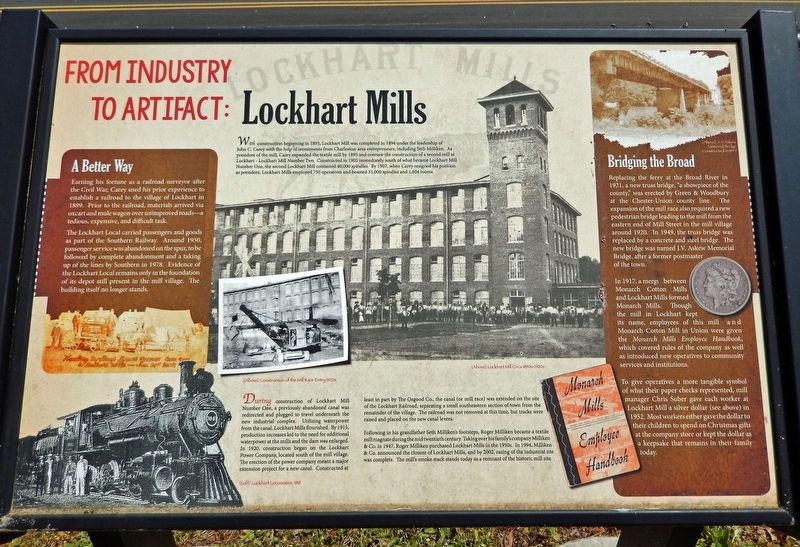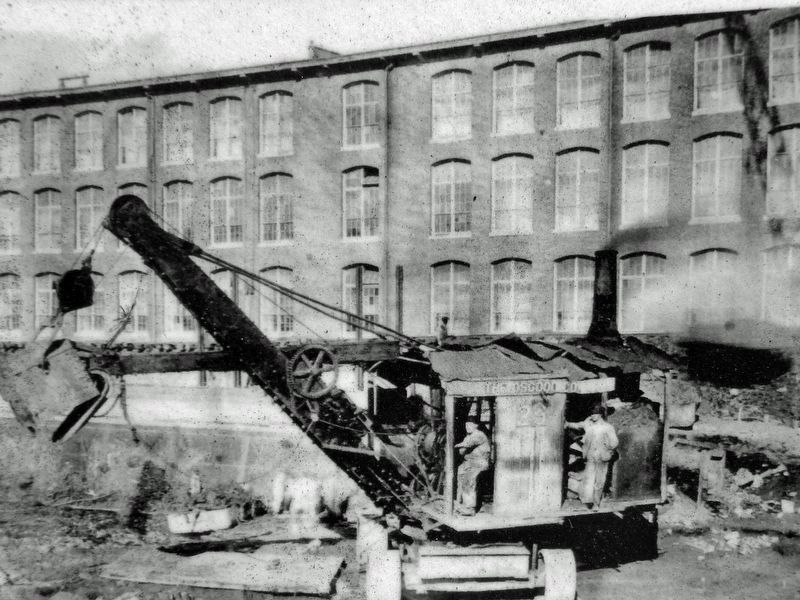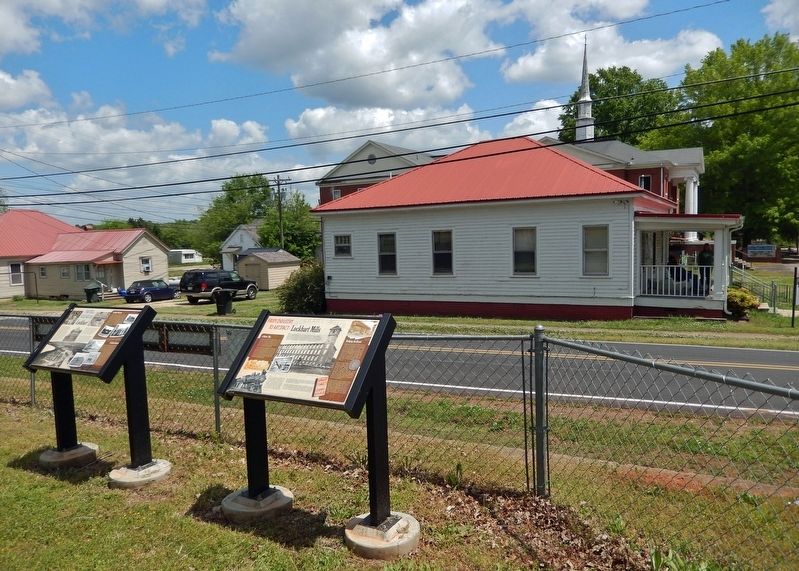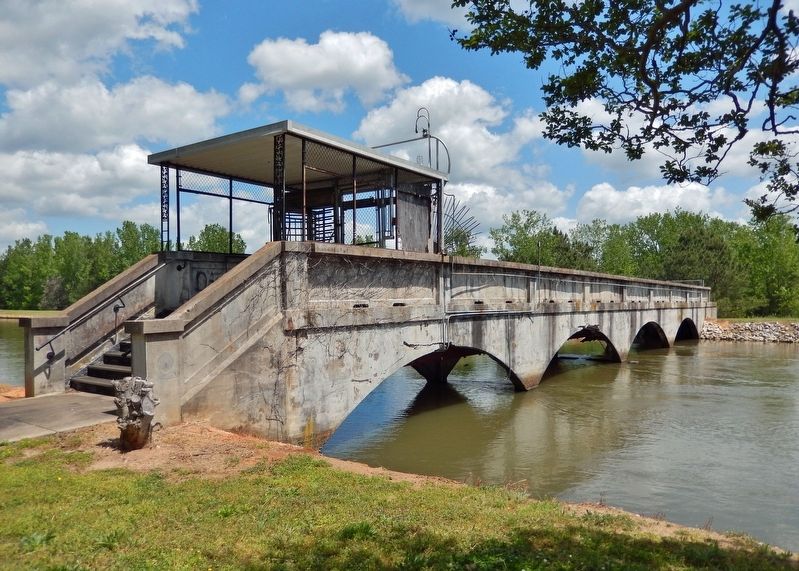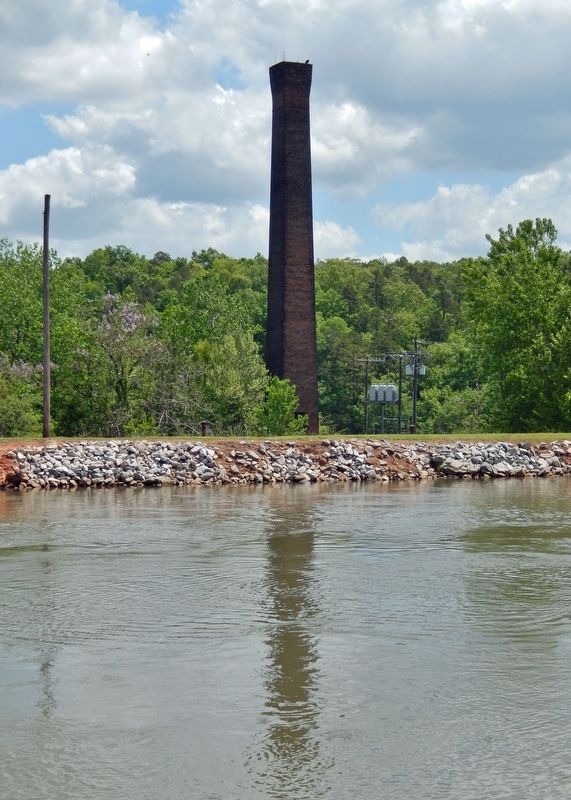Lockhart in Union County, South Carolina — The American South (South Atlantic)
From Industry to Artifact: Lockhart Mills
With construction beginning in 1893, Lockhart Mill was completed in 1894 under the leadership of John C. Carey with the help of investments from Charleston-area entrepreneurs, including Seth Milliken. As president of the mill, Carey expanded the textile mill by 1895 and oversaw the construction of a second mill at Lockhart — Lockhart Mill Number Two. Constructed in 1905 immediately south of what became Lockhart Mill Number One, the second Lockhart Mill contained 40,000 spindles. By 1907, when Carey resigned his position as president, Lockhart Mills employed 750 operatives and boasted 51,000 spindles and 1,604 looms.
During construction of Lockhart Mill Number One, a previously abandoned canal was redirected and plugged to travel underneath the new industrial complex. Utilizing waterpower from the canal, Lockhart Mills flourished. By 1915, production increases led to the need for additional waterpower at the mills and the dam was enlarged. In 1920, construction began on the Lockhart Power Company, located south of the mill village. The erection of the power company meant a major extension project for a new canal. Constructed at least in part by The Osgood Co., the canal (or mill race) was extended on the site of the Lockhart Railroad, separating a small southeastern section of town from the remainder of the village. The railroad was not removed at this time, but tracks were raised and placed on the new canal levees.
Following in his grandfather Seth Milliken's footsteps, Roger Milliken became a textile mill magnate during the mid twentieth century. Taking over his family's company Milliken & Co. in 1947, Roger Milliken purchased Lockhart Mills in the 1950s. In 1994, Milliken & Co. announced the closure of Lockhart Mills, and by 2002, razing of the industrial site was complete. The mill's smoke stack stands today as a remnant of the historic mill site.
A Better Way
Earning his fortune as a railroad surveyor after the Civil War, Carey used his prior experience to establish a railroad to the village of Lockhart in 1899. Prior to the railroad, materials arrived via oxcart and mule wagon over unimproved roads — a tedious, expensive, and difficult task.
The Lockhart Local carried passengers and goods as part of the Southern Railway. Around 1950, passenger service was abandoned on the spur, to be followed by complete abandonment and a taking up of the lines by Southern in 1978. Evidence of the Lockhart Local remains only in the foundation of its depot still present in the mill village. The building itself no longer stands.
Bridging the Broad
Replacing the ferry at the Broad River in 1921, a new truss bridge, "a showpiece of the county," was erected by Green & Woodbury at the Chester-Union county line. The expansion of the mill race also required a new pedestrian bridge leading to the mill from the eastern end of Mill Street in the mill village around 1920. In 1949, the truss bridge was replaced by a concrete and steel bridge. The new bridge was named J.V. Askew Memorial Bridge, after a former postmaster of the town.
In 1917, a merger between Monarch Cotton Mills and Lockhart Mills formed Monarch Mills. Though the mill in Lockhart kept its name, employees of this mill and Monarch Cotton Mill in Union were given the Monarch Mills Employee Handbook, which covered rules of the company as well as introduced new operatives to community services and institutions.
To give operatives a more tangible symbol of what their paper checks represented, mill manager Chris Suber gave each worker at Lockhart Mill a silver dollar (see above) in 1952. Most worker's either gave the dollar to their children to spend on Christmas gifts at the company store or kept the dollar as a keepsake that remains in their family today.
[photo captions]
• Lockhart Mill Circa 1890s-1920s
• Hauling Northrop Looms Across Sou. Carolina to Lockhart Mills — Jan. 21st 1896
• Lockhart Locomotive, 1918
• J. V. Askew Memorial Bridge Constructed in 1949
Topics. This historical marker is listed in these topic lists:
Bridges & Viaducts • Industry & Commerce • Railroads & Streetcars • Waterways & Vessels. A significant historical year for this entry is 1893.
Location. 34° 47.397′ N, 81° 27.634′ W. Marker is in Lockhart, South Carolina, in Union County. Marker is at the intersection of Lockhart Drive and Mill Street, on the right when traveling south on Lockhart Drive. The marker is located near the northwest corner of the intersection. Touch for map. Marker is in this post office area: Lockhart SC 29364, United States of America. Touch for directions.
Other nearby markers. At least 8 other markers are within 9 miles of this marker, measured as the crow flies. The Mill Village of Lockhart (here, next to this marker); Bullock Creek Presbyterian Church (approx. 5.4 miles away); Bullock Creek Revolutionary War Monument (approx. 5˝ miles away); Professor Lowe Balloon Landing Site (approx. 7.3 miles away); Balloon Landing, 1861 (approx. 7.4 miles away); Kelton (approx. 7.4 miles away); Lacey's Fort (approx. 7.9 miles away); Site of Union Church, 1783-1819 (approx. 8.7 miles away).
Related markers. Click here for a list of markers that are related to this marker.
Also see . . .
1. Lockhart Canal and Lockhart Mill Village. Excerpt:
The historic Lockhart Mills were constructed across the river from the Osborne Mill site on the York County side of the Broad River. Amos W. Osborne had created a massive grist mill and sawmill operations on the west bank and operated the mills successfully well into the mid 19th century. The waterpower needed to operate the Lockhart Mill was provided via the darn which was constructed and displaced the old Osborne mill’s supply of water.(Submitted on December 15, 2023, by Cosmos Mariner of Cape Canaveral, Florida.)
2. The Lady in White Still Haunts This Old Mill Site in South Carolina.
Lockhart, South Carolina, is a small town in Union County near the Chester County border on the Broad River. The area is known for the canal that passes under Highway 9. Mill life in the late 1800s and 1900s provided many in the area economic stability. The Lockhart Mill began operations in 1894 and lasted for one hundred years before closing its doors in 1994.(Submitted on December 15, 2023, by Cosmos Mariner of Cape Canaveral, Florida.)
Credits. This page was last revised on December 15, 2023. It was originally submitted on December 14, 2023, by Cosmos Mariner of Cape Canaveral, Florida. This page has been viewed 147 times since then and 76 times this year. Photos: 1, 2, 3, 4, 5. submitted on December 15, 2023, by Cosmos Mariner of Cape Canaveral, Florida.
